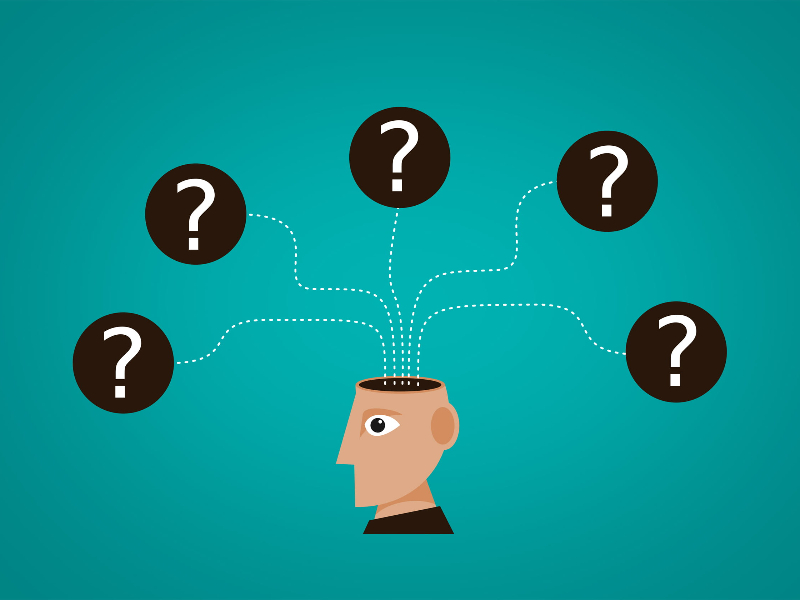After exploring the mental action words, i.e. verbs, in the last blog, we are finally here to talk about the first dimension as per this taxonomy. Before you read ahead, you should check out Part 1 & Part 2 of this blog series, if you haven’t already!

In our previous blogs, we discussed that;
- The first dimension of the taxonomy refers to the ‘Nouns’ that describe the content (knowledge) that is meant to be learned.
- The second dimension focuses on the ‘Verbs’ that describe what the children need to learn so that they know what to do with that content. It focuses on the cognitive processes (mental behaviour or actions) the child has to use to be able to work with the ‘knowledge’.
Today, we will dive deeper into the 1st dimension, i.e. Knowledge dimension of the taxonomy and discuss how a child’s ability to ‘how to think’ and ‘how to learn’ is a result of the interactions between these two dimensions.
To understand this further, let’s dip our feet into the categorisation of the first dimension, which will help us understand the content (knowledge) that the child is meant to learn. These four categories explain the first dimension.
- Factual knowledge – It refers to the basic elements of any discipline that is discrete and comprises bits and pieces of information. It facilitates a child to learn discipline. The two subtypes of factual knowledge are:
a. Knowledge of terminology
b. Knowledge of specific details and elements - Conceptual Knowledge – This refers to understanding the interrelationships between the elements of a larger structure that enables them to function together. The three subtypes of conceptual knowledge are:
a. Knowledge of classifications and categories
b. Knowledge of principles and generalisations
c. Knowledge of theories, models and structures - Procedural Knowledge – This type refers to the knowledge concerned with the question – “how to do something?” It involves methods of inquiry and criteria for using a skill, the knowledge of algorithms, techniques, knowing the ‘what’ and ‘when’ of any situation. The subcategories of procedural knowledge are:
a. Knowledge of specific skills and algorithms
b. Knowledge of specific techniques and methods
c. Knowledge of criteria for determining when to use the appropriate procedure - Metacognitive Knowledge – The fourth type of knowledge involves the knowledge of cognition in general. It is concerned with knowing and being aware of one’s cognition. It can also be called ‘thinking about thinking.’ The subcategories of metacognitive knowledge are:
a. Strategic knowledge
b. Knowledge about cognitive tasks, including appropriate contextual and conditional knowledge
c. Self-knowledge
Now that we have gained an understanding of both the dimensions, it is ideal to know that the interaction between these two dimensions gives rise to the Taxonomy table in which one can locate the junction of the classifications of any ‘Learning Objective’ under Noun (1st dimension) and Verb (2nd dimension)’. Now the question that stands is;
How does this table help educators, trainers, instructional designers, teachers and, of course, parents?
This taxonomy table helps everyone understand the educational objectives. Both the dimensions are presented in the following table that can be used to write clear and focused objectives. Let’s have a quick look at the table and understand how it works.
Two Dimensions – Knowledge versus Cognitive Domains
| Two Dimensional Framework | Remembering | Understanding | Applying | Analyzing | Evaluating | Creating |
| Factual Knowledge | ||||||
| Conceptual Knowledge | ||||||
| Procedural Knowledge | X | |||||
| Metacognitive Knowledge |
With the help of the Taxonomy table, one can locate the learning objective. To make meaning of the objective, first of all, the verb and noun of the objective need to be identified. The verb is identified in terms of the six cognitive domains, and the noun is identified in terms of four types of knowledge. Placing the objective based on such examination will then reveal the interaction between the two dimensions. Let’s take an example where the learning objective is – “learn to apply to recycle”. Could you figure out the noun and the verb in the objective?
The verb here is ‘apply’, which straight away fits into the cognitive domain of ‘Applying’. Further, recycling refers to a procedure or method, and as we have already read, this belongs to the ‘Procedural’ knowledge. Therefore, the objective is to be placed where applying and procedural knowledge interact (shown in the table by ‘X’). So simple, isn’t it? However, the classification can sometimes become quite challenging when the objective involves more than one noun and/or cognitive domain.
We believe – excellent curriculum planning, lesson planning, delivery planning and assessment planning can only come alive if the learning goals are to be achieved, activities used to achieve these goals and the assessment of goals are all aligned with each other. If not, there will always be gaps between the intention and outcomes. And that is precisely how we have structured the curriculum & delivery at Konshius, through such detailed mapping.

At Konshius, we have designed a game-based learning system focusing on the ‘Creating domain’ and ‘Metacognitive Knowledge’. A system where children tap into their inner abilities with optimum utilisation of their learning potential. Through the game-playing experiences, we uncover their thinking abilities to nurture their full potential, all while having fun.
This journey of uncovering learning will not stop for Konshius. And, it should not stop for you. So, keep discovering yourself and newer ways of learning!

